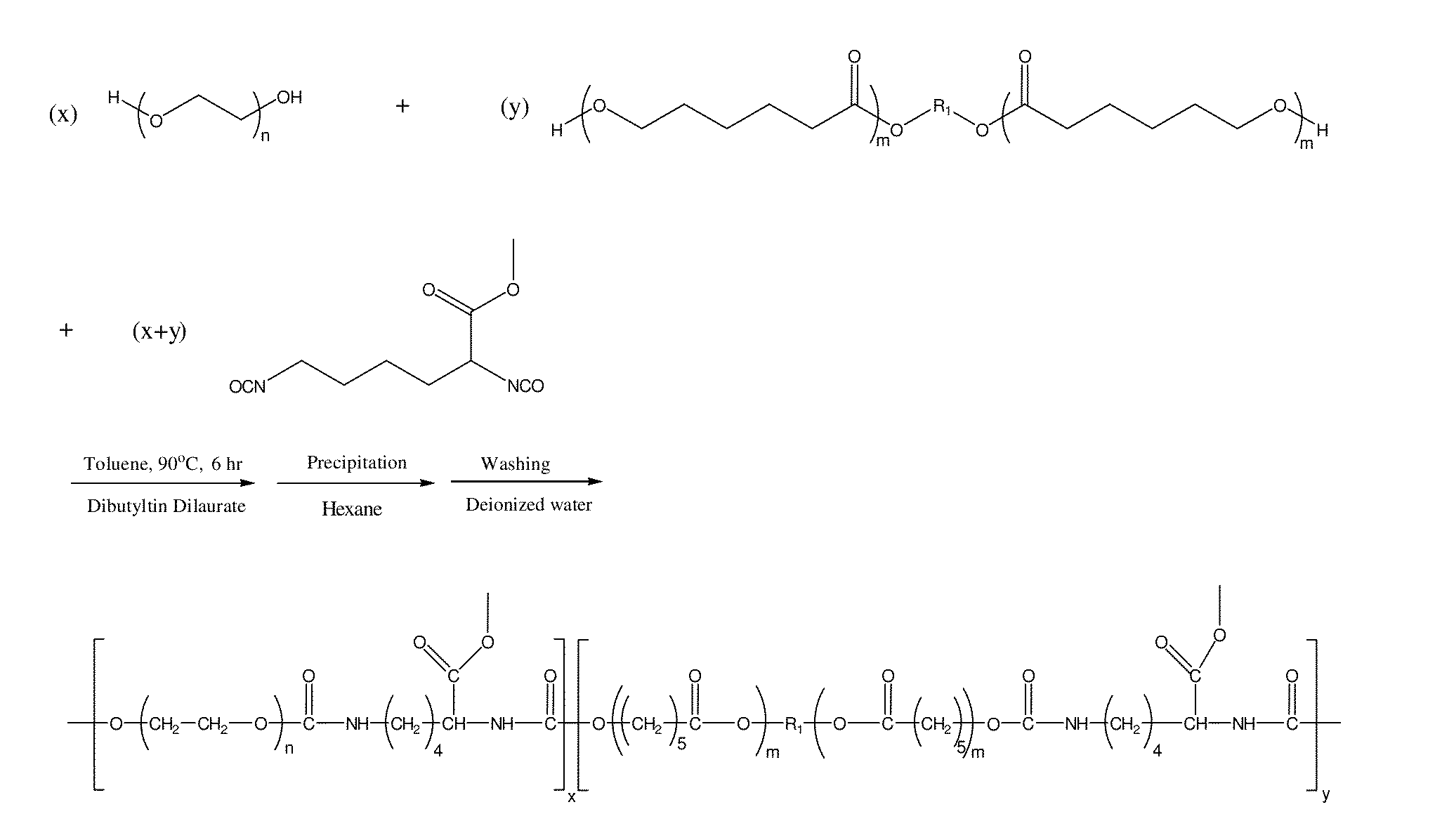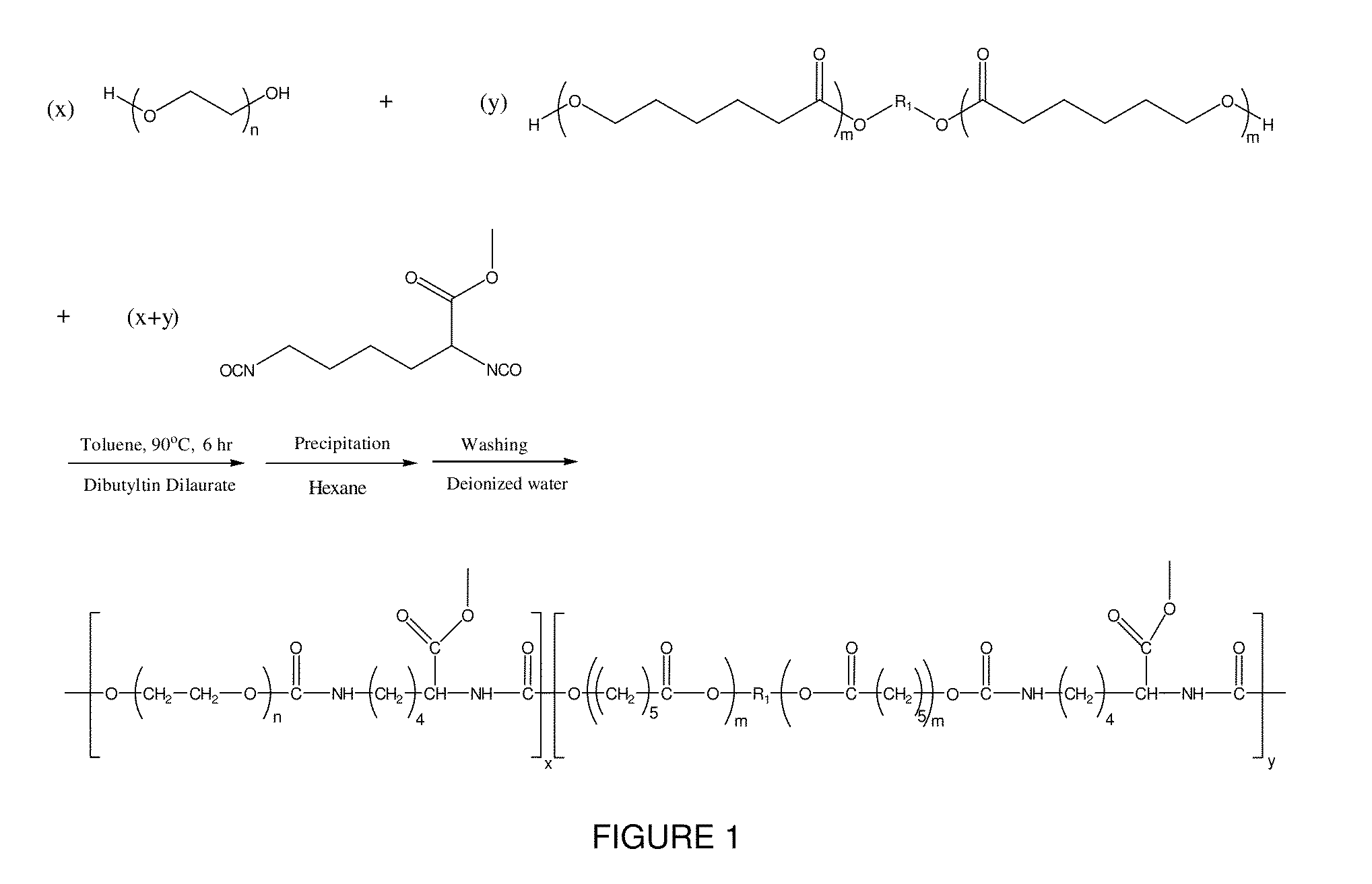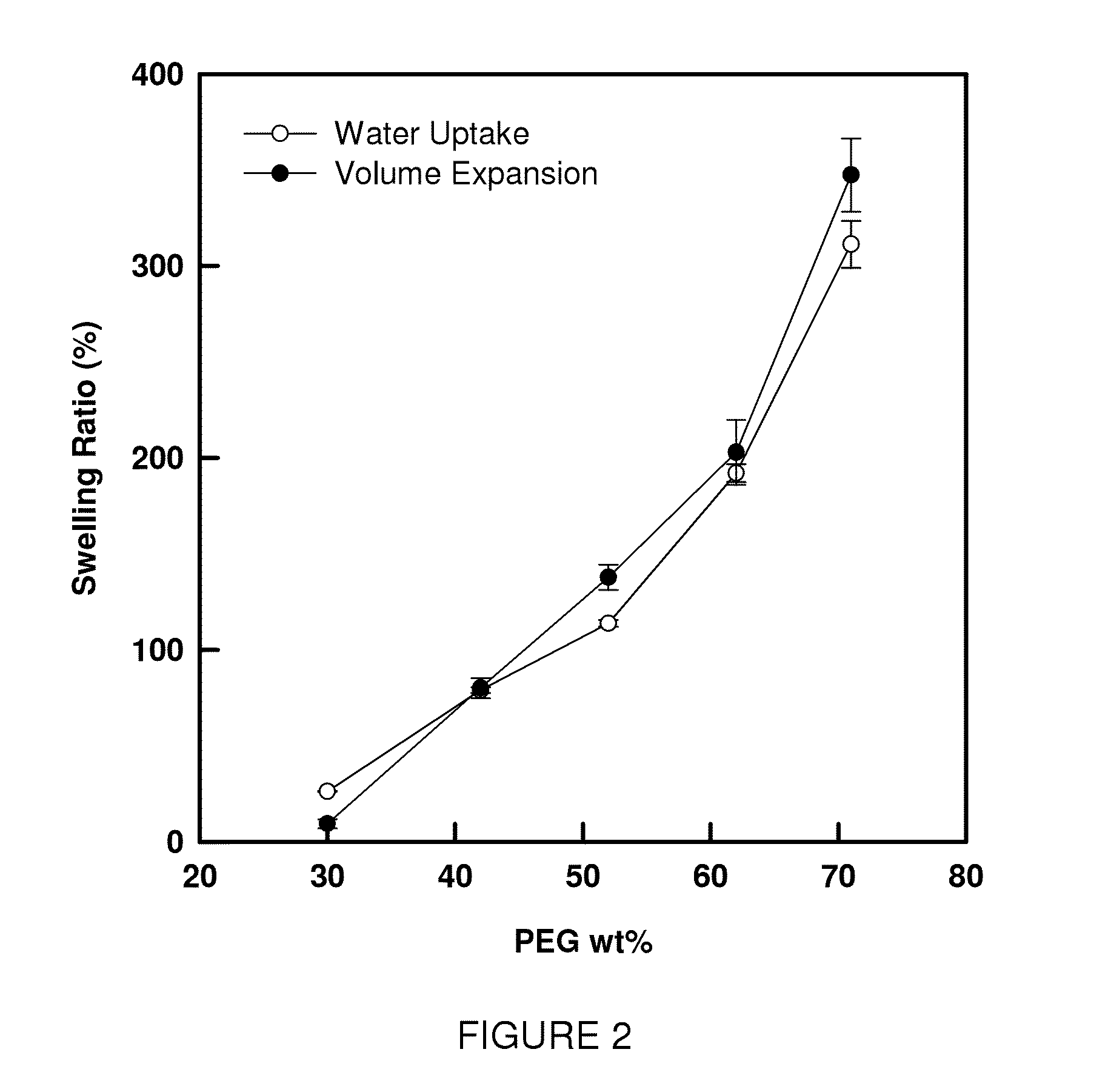Water-triggered shape memory of PCL-PEG multiblock TPUs
a multi-block, water-triggered technology, applied in the field of shape memory polymers, can solve the problems of slow shape memory effect, slow effect, and recovery taking at least 180 minutes, and achieve the effect of rapid shape recovery
- Summary
- Abstract
- Description
- Claims
- Application Information
AI Technical Summary
Benefits of technology
Problems solved by technology
Method used
Image
Examples
Embodiment Construction
[0033]Referring now to the drawings, wherein like reference numerals refer to like parts throughout, there is seen in FIG. 1 a schematic of the synthesis of high molecular weight PCL-PEG multiblock hybrid thermoplastic polyurethanes. The urethane linkages were formed through the addition reaction between isocyanate groups of the lysine methyl-ester diisocyanate (LDI) and the hydroxyl groups of either poly(ethylene glycol) (PEG) or poly(c-caprolactone) (PCL) diol. Seven PCL-PEG TPUs of varying compositions were synthesized. The feed ratios of PCL / PEG were varied to control the hydrophilic-hydrophobic balance. Crystalline phases of both blocks coexisted in the multi-block TPUs, indicating micro-phase separation driven by thermodynamic incompatibility between hydrophilic PEG blocks and hydrophobic PCL blocks and dramatic contrast in hydrophilicity between the two blocks.
[0034]The study of the water-triggered shape memory behavior of PCL-PEG TPUs involves their contact with water. As su...
PUM
| Property | Measurement | Unit |
|---|---|---|
| recovery time | aaaaa | aaaaa |
| Tg | aaaaa | aaaaa |
| thickness | aaaaa | aaaaa |
Abstract
Description
Claims
Application Information
 Login to View More
Login to View More - R&D
- Intellectual Property
- Life Sciences
- Materials
- Tech Scout
- Unparalleled Data Quality
- Higher Quality Content
- 60% Fewer Hallucinations
Browse by: Latest US Patents, China's latest patents, Technical Efficacy Thesaurus, Application Domain, Technology Topic, Popular Technical Reports.
© 2025 PatSnap. All rights reserved.Legal|Privacy policy|Modern Slavery Act Transparency Statement|Sitemap|About US| Contact US: help@patsnap.com



